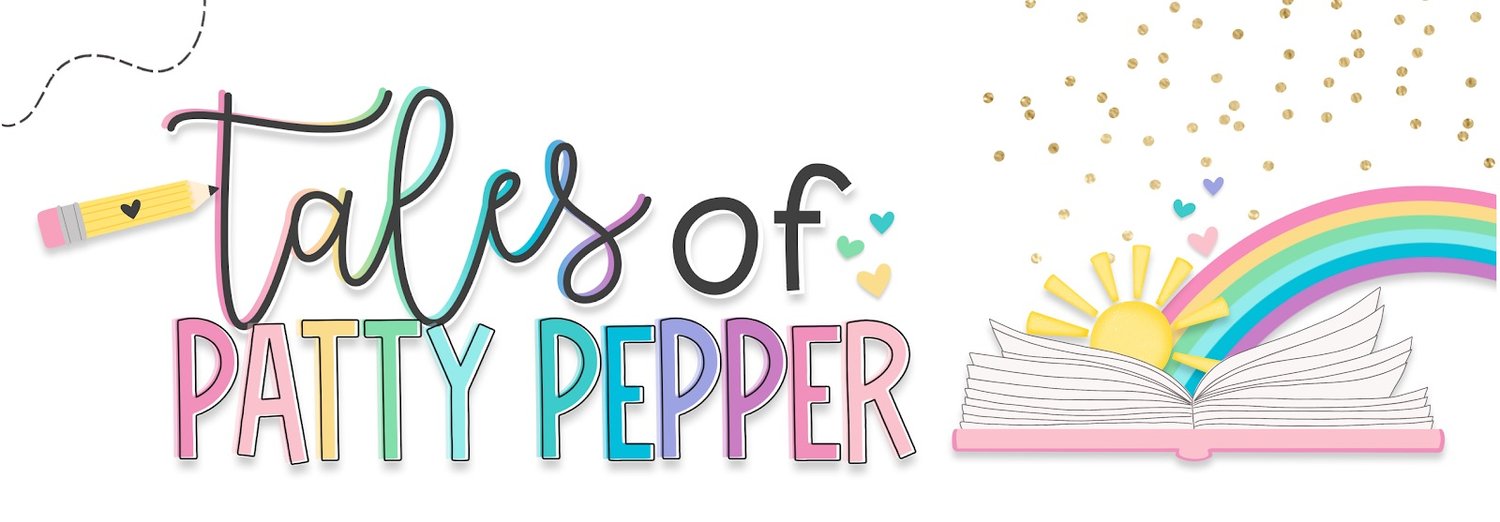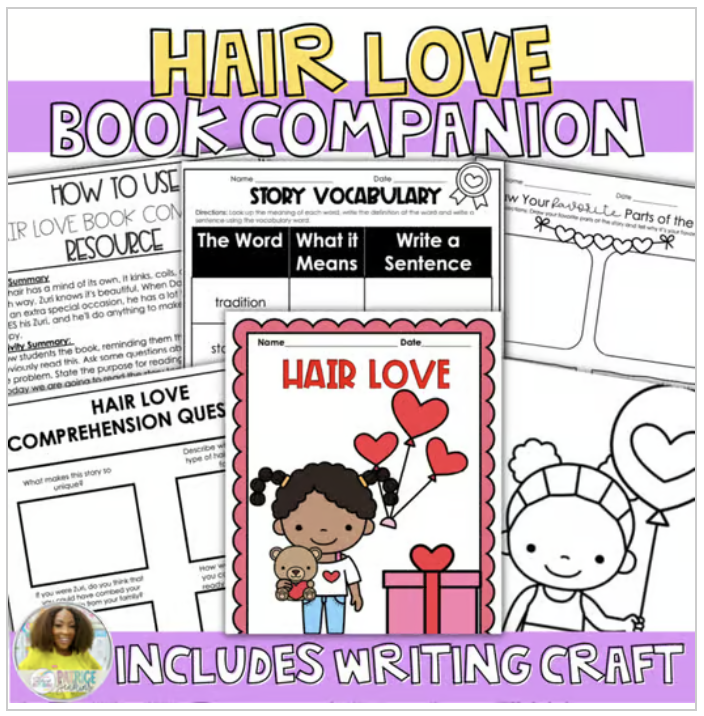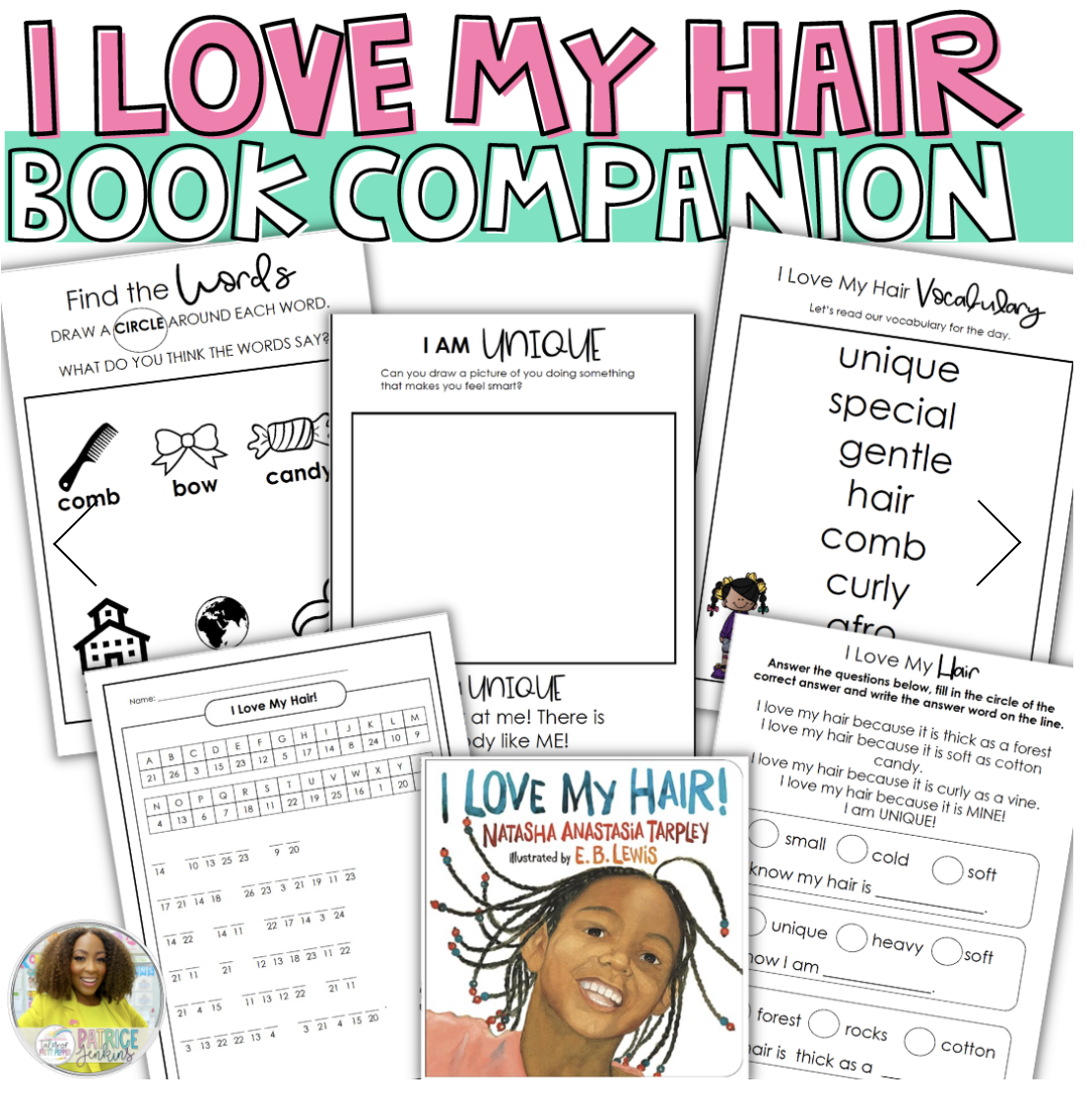Celebrating Diversity and Empowerment: Teaching with "Princess Hair”
In the colorful landscape of children's literature, there are gems that not only entertain but also educate and empower. One such gem is "Princess Hair" by Sharee Miller. This delightful picture book celebrates the beauty and diversity of Black hair while also conveying powerful messages of self-love, confidence, and cultural pride. As educators, we need to recognize the importance of inclusive representation in literature and leverage it to foster a positive classroom environment. Join me as we explore the significance of "Princess Hair" and discover creative ways to incorporate it into our teaching practices.
Why "Princess Hair" Matters:
"Princess Hair" is more than just a story; it's a celebration of identity and heritage. Through vibrant illustrations and engaging prose, Sharee Miller showcases a variety of hairstyles commonly worn by Black girls, from afros to braids to twists. By featuring characters with diverse hair textures and styles, the book validates the experiences of Black children and sends a powerful message that their unique beauty is something to be celebrated, not hidden or altered to conform to societal norms.
Ideas for Classroom Use:
Interactive Read-Aloud: Start by reading "Princess Hair" aloud to your students, inviting them to admire the beautiful illustrations and discuss the different hairstyles showcased in the book. Encourage students to share their own experiences and feelings about their hair.
Empowerment Activities: After reading the book, engage students in activities that promote self-expression and empowerment. Set up a "Princess Hair" station where students can create their own crowns or headbands adorned with colorful paper curls, beads, and ribbons, inspired by the hairstyles in the book. This hands-on activity not only reinforces the book's themes but also allows students to express their creativity.
Writing Prompts: Use "Princess Hair" as a springboard for writing prompts that encourage reflection and self-expression. Ask students to write about a time when they felt proud of their appearance or identity. Encourage them to incorporate descriptive language to capture the beauty and uniqueness of their hair or features.
Cultural Exploration: Take a deeper dive into the cultural significance of hairstyles within the Black community. Invite guest speakers, such as parents or community members, to share their knowledge and personal experiences related to hair care and styling. Create a classroom display featuring photos, artifacts, and books that celebrate Black hair and its rich history.
Inclusive Library Collection: Expand your classroom library to include more books that celebrate diversity and representation, including titles like "I Love My Hair" by Natasha Anastasia Tarpley and "Crown: An Ode to the Fresh Cut" by Derrick Barnes. Encourage students to explore these books independently and share their favorite stories with their peers.
Discussion Circles: Organize small group discussions focused on themes from "Princess Hair" and other related books like "I Love My Hair" by Natasha Anastasia Tarpley and "Hair Love" by Matthew A. Cherry. Encourage students to share their thoughts on the importance of representation in literature and how these stories resonate with their own experiences. Facilitate meaningful conversations that promote empathy, understanding, and appreciation for diverse perspectives.
Hair Care Education: Use "Princess Hair," "I Love My Hair," and "Hair Love" as springboards for lessons on hair care and hygiene. Invite a hairstylist or community health educator to demonstrate basic hair care techniques and discuss the importance of maintaining healthy hair habits. Provide resources, such as informational pamphlets or videos, that students can take home to share with their families. Empowering students with knowledge about proper hair care practices fosters self-confidence and promotes overall well-being.
By integrating these additional tips and incorporating beloved books like "I Love My Hair" and "Hair Love" into our teaching practices, we can deepen the impact of our lessons and create a more inclusive and empowering learning environment for all students.
Join me in celebrating diversity and promoting inclusivity in our classrooms! As an elementary teacher passionate about fostering self-love and cultural pride, I'm excited to share digital resources for beloved books like "I Love My Hair" and "Hair Love." These resources are designed to complement your curriculum and enhance student learning experiences.
Together, let's empower our students to embrace their identities with confidence and celebrate the beauty of diversity. Whether you're looking for interactive activities, discussion guides, or multimedia presentations, my digital resources have you covered. Let's ensure that every child feels seen, valued, and represented in our classrooms.
Visit my website store to access these valuable resources and start incorporating them into your lessons today. Together, we can create a learning environment where every student feels proud of who they are and inspired to reach their fullest potential.
Together, we can inspire the next generation to love themselves fully and unapologetically, one story at a time.
Happy teaching!



